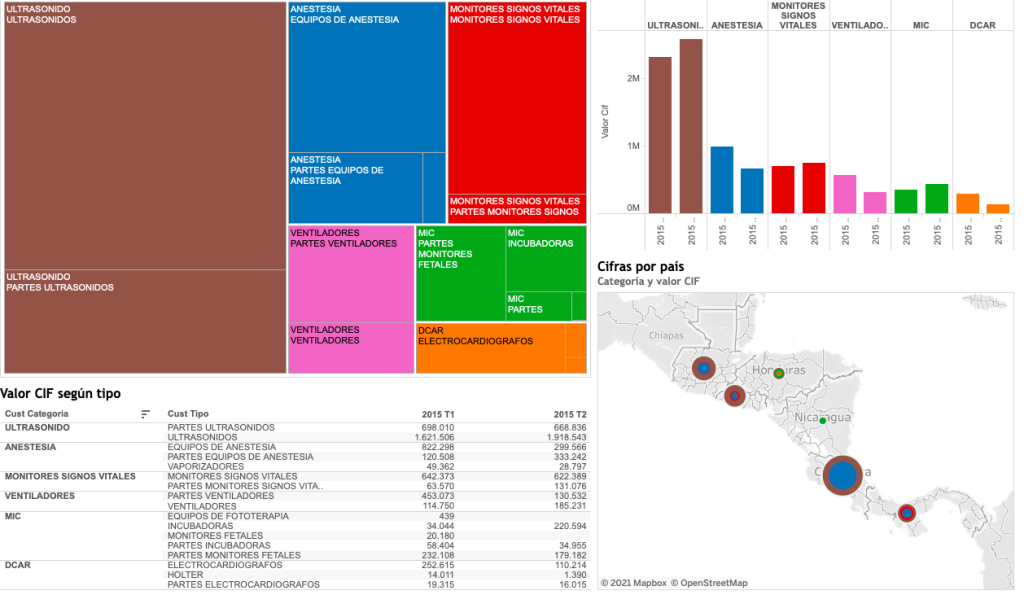Any data model in Big Data must be designed and developed to meet the needs of the business, and for this, it is necessary to know the objectives and goals of the organization, so that it effectively has the necessary functionalities to facilitate the decision-making process in the company.
What is a data model applied to business?
It is a type of language, an abstract representation of information oriented to talk about the relationships that a company’s data have with each other. It makes it possible to describe the type of data that exists, and all the real elements involved in a problem or situation.
You may be interested in: “Consumer Mobility as Data.”
There are 6 types of Big Data models that are most commonly used by businesses:
Descriptive Analysis
This is the most widely used model, its objective is to describe or summarize a set of data, thus generating simple summaries on samples and common descriptive statistical measures (measures of central tendency, variability, frequency, position, etc.).
The government sector uses this descriptive model with COVID-19 data to have a summary of cases/deaths, of the population of a particular state infected by the virus.
Exploratory Analysis
The purpose of this model is to examine or explore the data to find relationships between variables that were previously unknown. It is useful for discovering new connections, forming hypotheses, and driving design planning and data collection.
The environmental sector employs this analysis to measure temperature changes over a period of time to explore increased human activity and industrialization while forming relationships from the data.
Inferential Analysis
Inferential models consist of using a small sample of data to infer about a larger population, with the objective of extrapolating and generalizing the information to generate analyses and predictions.
In the commercial sector, it is used to analyze samples and make generalizations about a population, this allows to know which store can be the busiest in a shopping center.
Predictive Analytics
It uses historical or current data to find patterns to make predictions about the future. The accuracy of this model depends on the input variables and different mathematical models.
This type of model has been widely used in political elections, since it requires input variables such as historical data, trends and current data, applying different mathematical models in order to obtain a more accurate prediction about the possible winning candidate.
Causal Analysis
Analyzes the cause and effect of relationships between variables, focusing on finding the cause of a correlation, being applied in randomized studies focused on identifying causality, scientific studies in which the cause of the phenomenon must be extracted and pointed out, finding out the causal relationship between variables, changing one variable and what happens to another.
The pharmaceutical industry uses this model to approve new drugs, conducting randomized control trials in order to test the effect of the drug, and thus measure the results in order to bring the drug to market.
Also see: “Big Data and Business: Answers to unknown questions.”
Mechanical Analysis
Aims to understand the exact changes in variables that lead to other changes in several variables, applied in physical or engineering sciences, situations that require high precision and little margin of error, in a way a predictive analysis, but modified to address studies that require high precision and meticulous methodologies for physical or engineering science.
The scientific sector uses mechanistic analysis, involving a precise balance of control and manipulation of variables with very precise measurements of desired outcomes, to simulate a safe and efficient nuclear fusion that delivers energy to a certain region.
[button button_text=”Like what you see? Request a free DEMO” button_style=”style-1″ button_arrow=”true” button_rounded=”true” font=”Default” button_size=”medium” font_size=”” button_icon=”” button_align=”center” padding_v=”” padding_h=”” button_link=”/request_demo/” link_open=”_self” href_title=”” id=”” class=”” bg_color=”” text_color=”” border_size=”” border_color=”” border_radius=”” h_bg_color=”” h_text_color=”” h_border_size=”” h_border_color=”” h_border_radius=”” margin_top=”” margin_bottom=”” margin_left=”” margin_right=””]

Contact us to get more information about our business intelligence solutions

